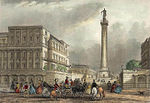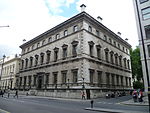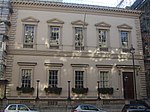UK Young Academy
2022 establishments in the United KingdomBritish AcademyNational academies of sciencesOrganisations based in the United KingdomRoyal Academy of Engineering ... and 6 more
Royal Irish AcademyRoyal SocietyRoyal Society of EdinburghScientific organisations based in the United KingdomYouth organisations based in the United KingdomYouth science
The UK Young Academy (UKYA) is a national interdisciplinary membership organisation that brings together UK-based early career researchers, professionals and innovators from a wide range of sectors, enabling them to collaborate to make a positive difference in the UK and globally. Its work programmes include member-led activities and initiatives that work to address the challenges the world is facing at a national and international level.
Excerpt from the Wikipedia article UK Young Academy (License: CC BY-SA 3.0, Authors).UK Young Academy
Carlton House Terrace, City of Westminster Covent Garden
Geographical coordinates (GPS) Address Nearby Places Show on map
Geographical coordinates (GPS)
| Latitude | Longitude |
|---|---|
| N 51.505993380556 ° | E -0.13250586111111 ° |
Address
Carlton House Terrace
SW1Y 5AF City of Westminster, Covent Garden
England, United Kingdom
Open on Google Maps










